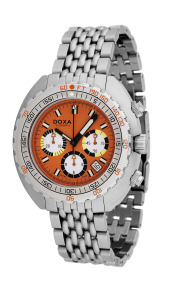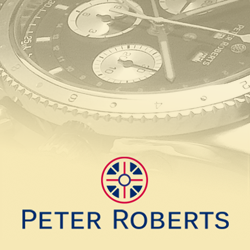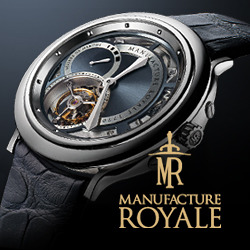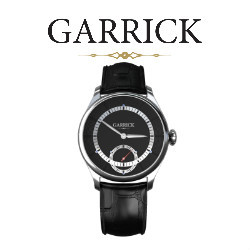Ken Kessler discusses watches that aren’t afraid to get wet
Along with severe shocks and magnetism, nothing can ruin a wristwatch like water. And resistance to the stuff was a design priority from the beginning: once watches left the relative safety of the pocket, to be worn on the wrist, even light rain became a genuine threat.
Watches worn on the wrist – adapted from pocket watches or, for ladies, from brooch-style watches – have dotted horological history, but the first watch designed from the outset to be worn on the wrist was, conveniently, conceived for naval use: Girard-Perregaux was commissioned by the German Navy to produce wrist-worn timepieces in the 1880s. It would take an event 30 years later – the First World War –that enabled wristwatches to supplant pocket watches, which they did with absolute totality.
Since then, watches have evolved to a point of near-indestructibility, at least where normal wear and tear are concerned. Bit far from being precluded from sporting or risky situations, watches are developed specifically to withstand whatever their owners can throw at them. And the famous and visibly sporting of all watches are those designed for swimming and diving.
Prior to the almost universal adoption of modern, ultra-precise wrist-computers, scuba and deep-sea divers – both amateur and professional – depended on mechanical watches to remind them of the amount of air they had left in their tanks. While such devices still dominate, the rebirth of the mechanical watch in the 1990s – for fashion, for status, and above all as a collector’s passion – has given new life to the non-electronic alternative. Aside from the obvious requirement for absolute dependability in terms of timekeeping accuracy, which mechanical watches have achieved, such watches needed to have one quality above all others: total impermeability.
Rolex is credited with the creation of the first truly dependable, waterproof wristwatch. When Mercedes Gleitze swam the English Channel in 1927, she had a Rolex Oyster strapped to her wrist. Upon completing her crossing, after 14 hours and 15 minutes, the watch was working perfectly. And it caused a sensation, raising the bar for all of Rolex’s rivals. Omega approached the problem in the 1930s with the Marine Standard, a rectangular design with a special outer case and water-resistant strap; it worked reasonably well, but Rolex’s approach to case design, with a screw-down case-back and screw-down winder, created the blueprint for every diving watch for the last 80 years or so.
Rolex’s solution provided true impermeability. Refined over the years with special gaskets, a rotating bezel to allow divers to mark elapsed time, an expandable, heavy bracelet for wearing over the sleeve of a wetsuit and other detail improvements, the Rolex Submariner is the definitive diving watch. Its heavier sister, the Sea-Dweller, added a helium release valve for even deeper diving.
In parallel with Rolex, other great brands developed waterproof watches for military use, most notably the great brand Panerai. Using Rolex movements, Panerai – a supplier of various materiel to the Italian armed forces – created special watch cases and high-legibility dials for the Italian Navy’s crack diving squads. Issuing watches in small numbers between the late 1930s and the early 1990s, the brand became a part of the mighty Richemont Group, which took it to new heights: Panerai has been, for the past 10 years, one of the hottest manufacturers of the oversized watches that now dominate the market. Amongst Panerai’s latest releases is the yachting-flavoured Luminor 1950 Flyback Regatta, a handsome chronograph strictly limited to 500 units. Its back denotes that it commemorates the 2005 Classic Yachts Challenge.
Nearly every brand produces a line of marine watches, always commensurate with the company’s core reputation. Although a Swatch will keep any swimmer informed of the time, those who prefer something more luxurious, precious and sophisticated can look to Patek Philippe, who issued what many believe is the first diving watch to show that upscale elegance would not go amiss in a watch with genuine sporting worth. The Nautilus and its sister, the Aquanaut, have been reintroduced with new models to mark their 30th anniversary, addressing fashion on land with new colours and even diamond settings.
A half-century ago, around the time that Rolex launched the Submariner, Blancpain was commissioned to produce the magnificent Fifty Fathoms for military use. Like Panerai, it was a well-kept secret until its 50th anniversary, when the company produced a limited edition replica. Such was the success that the watch is now available in a modern version … and it goes far deeper than the original’s 50 fathoms. Omega has for decades enjoyed a strong following for its Seamaster – James Bond wears one – while Roger Dubuis is beloved by the perma-tanned for its Easy Diver range. IWC’s Aquatimers have been relaunched to great acclaim, boasting extra features for genuine diving use, Rado has relaunched its Diastar in a number of dial colours, and Eterna – which produced the watches worn by Thor Heyerdahl for the original Kon-Tiki expedition – has revived that name with a new diving watch.
What all have in common are an adherence to the suitability for the sport, so they tend to feature stainless steel cases, highly legible dials and steel bracelets or rubber straps; the Doxa 600T, for example, uses a vivid orange as its dial colour. What diving watches haven’t exhibited, though, is ‘bling-bling’-grade glamour. Until now, that is. Gold and platinum are increasingly popular materials, pushing the diving watch further up the luxury ladder, but one shouldn’t be too puzzled: it’s precisely the same approach that has turned the Range Rover and other SUVs into something more than a means of delivering hay to horses or schlepping through the mud.
A close relative to the diving watch, and one that almost just as certain to get wet, is the yachting watch. This is a sporting subgenre, probably started by Heuer with its Mareograph, a chronograph launched in 1950 with a tide indicator. Corum’s Admiral’s Cup actually features signal flags on its dial, and various models over the years have addressed specific yachting functions, not least being the timing of race starts. To this must be added the latest watch company with a yachting link, but it’s also the first – none other than Girard-Perregaux, which produced the first wristwatches for the German Navy in the 19th Century.
In 2004, Girard-Perregaux signed a sponsorship agreement with BMW Oracle Racing for the 32nd America’s Cup. Girard-Perregaux’s CEO, Luigi Macaluso, is showing the same passion for yachting that made him a world-class rally driver in the 1970s, and he’s responded to the needs of timekeeping at sea with a line of safe-at-sea watches in honour of John Harrison, who established the principles of longitude. For 2006, Girard-Perregaux has introduced a new version of its ww.tc World Time watch. A superb chronograph able to show the time in all 24 zones at a glance, it now features a timer segment ideal for yacht racing.
And it won’t mind being splashed on one bit. Even with the victor’s champagne.
(Benetti Yachts, 2006)










